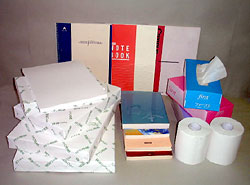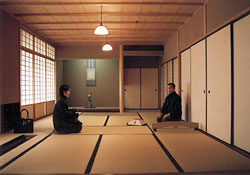|
|
|
|
Most paper that you come across every day - such as in textbooks and notebooks and as toilet paper and tissues - is made from wood. To be more precise, it's made from wood chips that are left over after logs have been cut up into beams and other shapes for use in construction. These chips are treated with special chemicals to remove the fibers - the raw ingredients for paper. The fibers removed like this are called wood pulp, which has a brown color. The wood pulp is then bleached, spread out thinly, and dried to make white sheets of paper.
|
|
|
Not all paper is made from hardwood, though. In Japan, the bark of mulberry and other bushes are used to make 1,000 yen bills and other bank notes, calligraphy paper, and the paper in sliding doors (like shoji and fusuma) in Japanese homes. The fibers used for such washi (traditional Japanese paper) are very long and tough.


